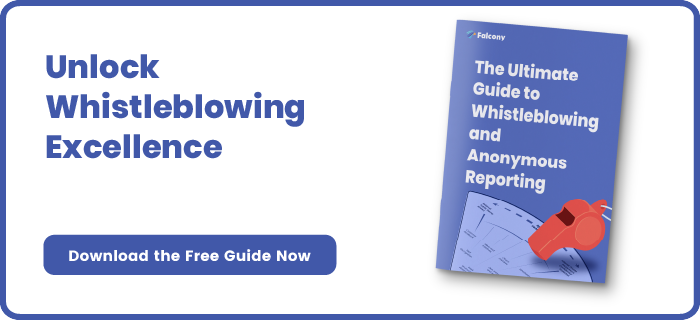How To Share The Whistleblower Channel With Your Stakeholders?
In 2019, the European Union (EU) issued a directive for the protection of whistleblowers. This was aptly called the ‘Whistleblower Directive’. To comply with this directive, both public and private institutions have to establish accessible and easy-to-find internal and external whistleblowing channels.
In this article we will discuss why that is, where and how the channel can be made publicly available.
The Importance Of Making Your Whistleblower Channel Discoverable
Whistleblowing has received a bad rap in the past. But, the EU directive has brought it to the spotlight and highlighted some valuable benefits. These include:
- Better compliance
- Increased accountability and transparency
- Employee protection
- Optimised risk management
- Demonstrating that your business takes irregularities seriously
- Building stakeholder confidence
However, your business cannot reap the benefits of whistleblowing if your staff and stakeholders don’t know how to access reporting platforms.
Improving accessibility opens up the number of people that will file reports. This is because it will improve everyone's understanding of how your reporting procedures work. To report incidents, individuals need to be able to find the channel easily.
Further, establishing an easy-to-use platform can prevent whistleblowers from changing their minds. If the process is difficult or tedious, they may be put off filing a report altogether.
Why Is Anonymous Reporting Essential?
The regulation stipulates that businesses have to enable an anonymous reporting option. Allowing reporters to remain anonymous encourages reporting.
Anonymity also protects whistleblowers from negative repercussions. This includes physical and verbal violence, bullying, dismissal, demotion, suspensions, and more. Although retaliation is legally prohibited, whistleblowers still need protection.
Where You Should Make Your Channel Available
As per the directive, companies have to create internal and external reporting channels. Here are four places where you should make your channel available.
Public Website
Integrating your channel onto your public website makes it open for all people to file reports. External actors should be able to report on your website. Internal workers can also use this option if they feel that the internal alternative isn’t trustworthy.
Ethical Guidelines
Education is vital for the success of your whistleblower channels. Your organisation needs to include your whistleblowing procedures and policies in all ethical guidelines or company guides. For example, it should be in your code of conduct.
Include relevant information such as:
- how whistleblowers can report
- the protections they receive
- and the whistleblowing process
This is ensures clarity and transparency for the individuals who wish to make a report.
Supplier Contracts
Suppliers and other collaborators also need a clear explanation of your whistleblowing policies. Include information on your channel in your contracts. For example, add it in as an appendix that includes your amended code of conduct with ethical guidelines.
Company Intranet
Your company intranet is your internal hub for company information and communications. This makes it the perfect space to educate your workers on whistleblowing and to establish accessible channels to report. Alternatively, your organisation could use a customisable whistleblowing platform.
Final Thoughts
Whistleblowing is already stressful and difficult for the whistleblower. Having a challenging and alienating reporting channel does not help.
Make reporting easier with a discoverable, accessible and anonymous platform. This will benefit both your employees and your organisation.
Are you looking for a tool to enable and monitor whistleblower reports or any other issues in your organisation? Falcony | Observe ticks all the boxes for anonymous reporting, investigation management, is easy to customise, enables real dialogue and is a lot more.
We are building the world's first operational involvement platform. Our mission is to make the process of finding, sharing, fixing and learning from issues and observations as easy as thinking about them and as rewarding as being remembered for them.
By doing this, we are making work more meaningful for all parties involved.
More information at falcony.io.

Related posts
Whistleblowing vs Internal Audit - How to use them in combination?
Whistleblowing and internal audits are essential components of an organization's governance and...
What is ISO37002 and how it relates to whistleblowing?
ISO 37002 is an international standard for implementing and maintaining a whistleblower protection...
The good, the bad and the ugly ways of managing whistleblowing cases
Whistleblowing cases are a litmus test for an organization's ethical values, transparency, and...




